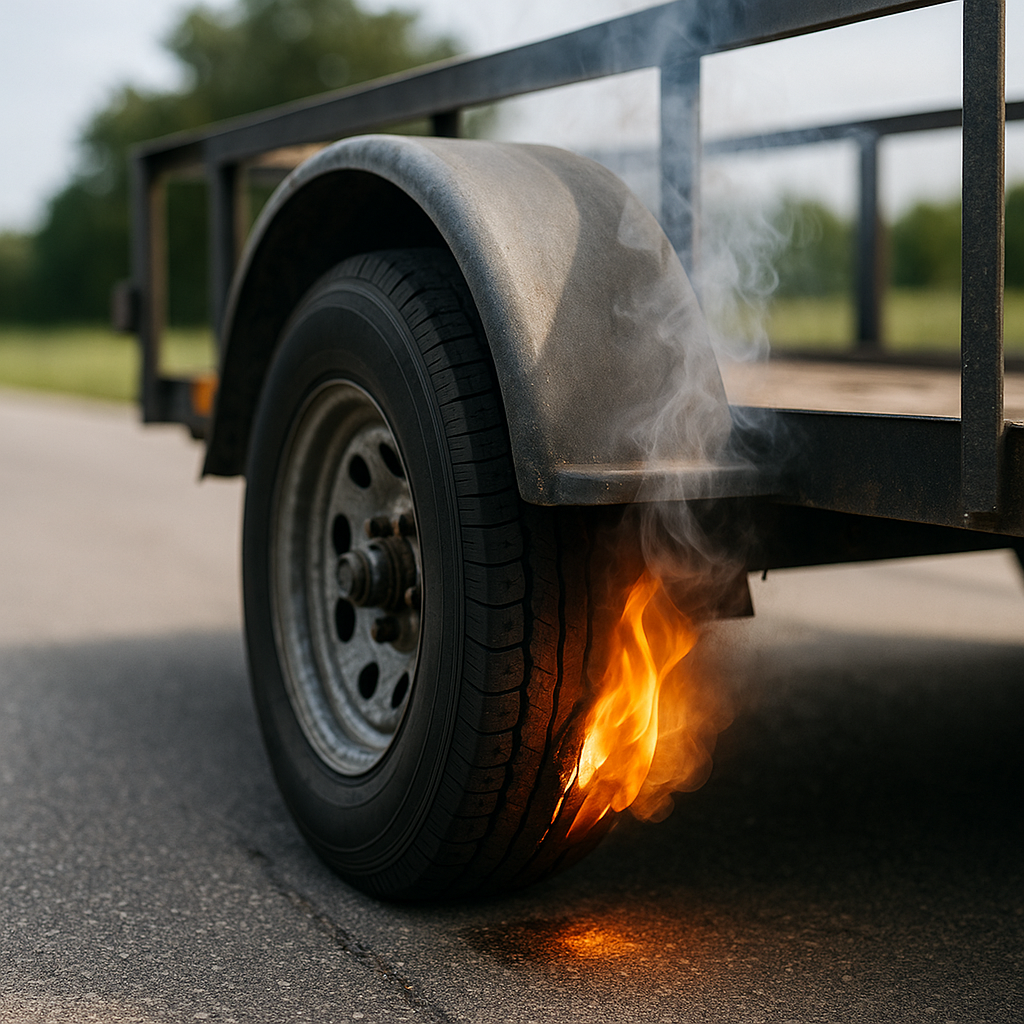Maintaining the right temperature for tires is crucial for the overall performance and safety of your vehicle. Tires are the only point of contact between your trailer and the road, making their condition vital for a smooth and safe towing experience. When tires operate at improper temperatures, it can lead to increased wear and tear, reduced fuel efficiency, and, in severe cases, catastrophic tire failure.
Understanding how temperature affects tire performance involves recognizing a few key factors:
- Heat Build-Up: As tires rotate, friction generates heat. If the temperature exceeds the optimal range, it can cause the rubber to degrade, leading to blowouts.
- Pressure Changes: Tire pressure is directly influenced by temperature. A rise in temperature can increase air pressure, potentially leading to over-inflation.
- Performance Decline: Tires that are too hot can lose traction, impacting handling and braking capabilities, which are essential for safe towing.
By actively managing your tire temperature, you can prevent these issues. Utilizing a trailer monitoring system can provide real-time data on tire temperatures, allowing you to take action before problems arise. Tow with peace of mind, knowing that trailerwatchdog is standing guard. Visit trailerwatchdog.com to learn more about how to keep your tires and trailer safe.
Ideal Temperature Range for Different Tire Types

Different tire types are designed for specific applications and conditions, which means they each have their own ideal temperature range for optimal performance. Understanding these ranges can significantly enhance your safety and driving experience.
Here’s a breakdown of the ideal temperature ranges for various tire types:
- All-Season Tires: These tires perform well under a variety of conditions. The ideal operating temperature is generally between 30°F and 100°F. Staying within this range ensures they maintain adequate grip and wear evenly.
- Performance Tires: Designed for enhanced handling and speed, performance tires thrive in warmer conditions. Their optimal temperature range is typically between 70°F and 120°F. Operating outside this range can lead to diminished performance.
- Off-Road Tires: Built for rugged terrains, off-road tires usually perform best in temperatures ranging from 40°F to 110°F. Extreme heat can cause the rubber to soften, leading to quicker wear.
- Winter Tires: These tires remain effective in cold conditions, with an ideal temperature range of 20°F to 50°F. They are designed to stay flexible and maintain traction in cold weather.
Knowing the ideal temperature range for your tires not only helps in prolonging their lifespan but also enhances safety on the road. Monitoring your tire temperatures regularly is vital to ensure they are operating within these recommended ranges.
How to Measure and Monitor Tire Temperature

Maintaining optimal tire temperature is essential for maximizing tire performance and safety. Fortunately, measuring and monitoring tire temperature has become increasingly accessible, thanks to modern technology. Here are some effective methods to ensure your tires are operating at their ideal temperatures:
- Infrared Thermometers: One of the simplest ways to measure tire temperature is by using an infrared thermometer. This non-contact device allows you to quickly check the surface temperature of each tire. Aim the thermometer at the tire's sidewall after driving for a while, and ensure you take measurements on both the inner and outer edges for accuracy.
- Tire Pressure Monitoring Systems (TPMS): Many modern vehicles come equipped with a TPMS that not only monitors tire pressure but also provides temperature readings. This system alerts you if your tires are overheating, allowing you to take action before a potential failure occurs.
- Smart Tire Monitors: For those looking for advanced monitoring solutions, smart tire monitoring systems are a great option. These devices can be installed on any trailer or vehicle, providing real-time data on tire temperature and pressure directly to your smartphone or vehicle display. They can alert you to any irregularities and help you stay informed while on the road.
Regardless of the method you choose, regular checks are crucial, especially before long trips or after driving in challenging conditions. By integrating tire temperature monitoring into your routine, you can significantly reduce the risk of tire-related issues, ensuring a safer driving experience.
Effects of Temperature on Tire Performance and Safety

The temperature of your tires plays a critical role in their overall performance and safety. Understanding the effects of tire temperature can help you make informed decisions to enhance your driving experience. Here are key impacts to consider:
- Reduced Traction: Tires that are too cold can become stiff and lose flexibility, resulting in diminished grip on the road. This can lead to longer stopping distances and a higher risk of skidding, especially in wet or icy conditions.
- Increased Wear and Tear: Overheating tires can wear unevenly and degrade faster. High temperatures can cause the rubber to break down, leading to premature tire failure. Regular monitoring helps prevent excessive heat buildup, extending the life of your tires.
- Blowouts and Failures: When tires exceed their optimal temperature range, the chances of a blowout increase significantly. Excessive heat can lead to a loss of air pressure, making the tire more susceptible to punctures and catastrophic failures.
- Impact on Fuel Efficiency: Tires that operate at improper temperatures can affect fuel economy. Under-inflated or overheated tires increase rolling resistance, requiring more energy to maintain speed, which can ultimately lead to higher fuel consumption.
It's essential to maintain your tires within the recommended temperature range to maximize their performance and safety. Regular checks, especially during extreme weather conditions, will ensure that you are well-prepared for the road ahead.
Tips for Maintaining Optimal Tire Temperature
Maintaining optimal tire temperature is crucial for enhancing both performance and safety while driving. Here are some effective tips to help you keep your tires within the ideal temperature range:
- Regular Pressure Checks: Tire pressure significantly affects temperature. Check your tire pressure at least once a month and before long trips. Ensure they are inflated to the manufacturer's recommended levels, as both under-inflation and over-inflation can cause temperature fluctuations.
- Monitor Tire Temperature: Invest in a reliable tire temperature monitoring system. This technology provides real-time data on tire temperatures, allowing you to take immediate action if temperatures exceed safe limits.
- Rotate Tires Frequently: Regular tire rotation helps ensure even wear, which contributes to consistent temperature across all tires. Follow the manufacturer’s recommendation for rotation intervals.
- Drive Responsibly: Avoid aggressive driving behaviors such as hard braking and rapid acceleration, which can generate unnecessary heat. Smooth driving helps maintain tire temperature and promotes longevity.
- Inspect for Damage: Regularly inspect your tires for signs of wear, cracks, or other damage. Addressing these issues promptly can prevent overheating and enhance safety.
By implementing these practices, you can help maintain optimal tire temperature, ensuring a safer and more efficient driving experience.
Conclusion: Ensuring Safety Through Tire Temperature Awareness

Understanding and managing tire temperature is essential for ensuring safety on the road. Tires that operate within the optimal temperature range can significantly enhance vehicle performance, improve fuel efficiency, and extend tire lifespan. By actively monitoring tire temperatures and adhering to maintenance tips, drivers can mitigate the risk of tire blowouts and other catastrophic failures.
Moreover, a well-maintained tire system contributes to a more comfortable driving experience, allowing for better handling and stability. With a combination of regular checks, responsible driving, and advanced monitoring technology, such as those offered by TrailerWatchdog, you can ensure that your trailer operates safely and efficiently.
Tow with peace of mind, knowing that trailerwatchdog is standing guard.








